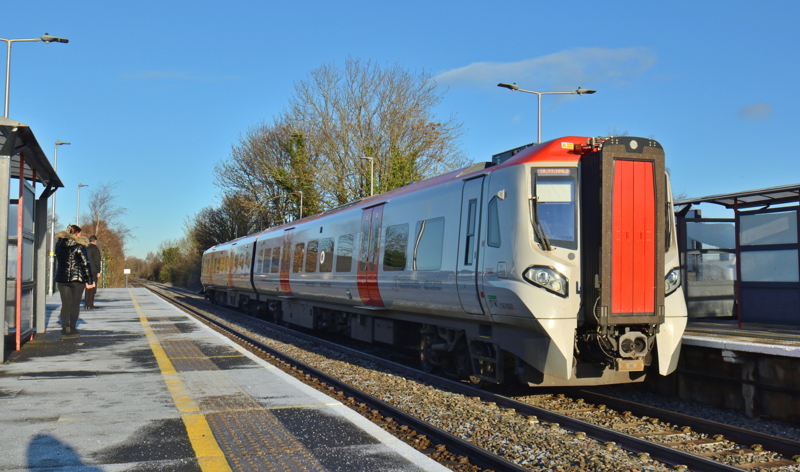
A passenger train on the Wrexham-Bidston route overshot its stopping point at Neston, on the Wirral peninsular, leading to temporary closure of the line on Wednesday October 23, RAIL has learned.

A passenger train on the Wrexham-Bidston route overshot its stopping point at Neston, on the Wirral peninsular, leading to temporary closure of the line on Wednesday October 23, RAIL has learned.
Confirming the incident Transport for Wales (TfW) said the driver of the 0721 Bidston-Wrexham Central “advised of reportable railhead conditions in the Neston area which caused the train to slide part-way through the station”.
“As the rear vehicle was still on the platform, the driver and guard used local door operation to allow passengers on and off the train.”
RAIL’s research reveals that the train was formed of two-car DMU 197044, which is 48m long. The platform at Neston is 85m long. It is understood that the next passenger train ran with a permanent way team on board to monitor conditions.
TfW told RAIL that due to “forecasted slippery rails on the Wrexham-Bidston line” a Rail Head Treatment Train “provided enhanced coverage between Wrexham and Buckley, and Neston and Buckley.” The RHTT also “ran at reduced speed of 20mph to ensure maximum coverage".
Additionally, before the incident, two trains were cancelled and replaced with road transport: 0645 Bidston-Wrexham General and 0747 Wrexham General–Bidston.
Network Rail was unable to provide RAIL with much information about the incident but issued a statement saying: “Autumn is traditionally a challenging time of year in the railway due to leaf fall and association adhesion issues. We regularly carry out railway treatment but sometimes, despite our best efforts, the adverse conditions are too severe and services need to be cancelled for safety reasons.
“The train in Neston overshot the station - incidents such as this can happen during the autumn season and we have well procured procedures to ensure safety is maintained. The next train was closely monitored in this section in line with our standard procedures.”
Login to continue reading
Or register with RAIL to keep up-to-date with the latest news, insight and opinion.

















Login to comment
Comments
No comments have been made yet.